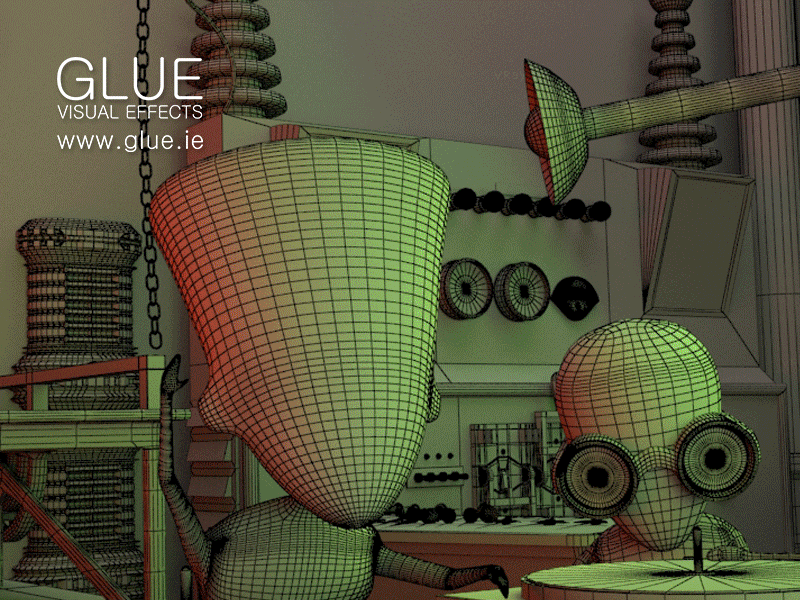For major animations made by big companies such as Pixar and Disney, there needs to be a production line of people with different jobs; this is known as a “pipeline”.
But the pipeline relies on everyone doing their jobs right, because if one small error occurs and gets passed down to the next department, then this will clog the metaphorical pipe. For example, if a modeller accidentally gives a model an extra finger, then it gets passed down through a couple of departments before anyone realises the mistake, it could potentially take a lot of effort to fix.
The schedule is very important to make sure that everything runs smoothly. It is very carefully planned out to make sure that people’s deadlines for their projects work together, and then consequently the finished animation is released on time.
It is also good for the people who are in the pipeline to be aware of some of the other job roles around them, as they could make decisions in their work which would make the job of the next person a lot easier, like making models that have good topology will make animating them way easier.
And now, here are the main job roles in the animation pipeline.
Story
Some stories might come from comic books, books, films, history, personal experiences and so on.

Directors
Directors are responsible for the whole upkeep of the production, they have to keep the whole crew on track and doing everything right. Directors start with the script.

Editorial
Then the storyboards are created from the script. After that, the Lead Editor makes an animatic, can be made to show the directors, producers and studio executives so that they can see how all the shots fit together. It is basically a rough blueprint of the final film.

Art
Visual development artists create the characters, props and environments of a film before it is made, and then they show everything to the director, to see if they fit the film that they want to make.

Modelling
The modellers receive the concept art from the art department, then using that create all the environments, characters, props and pretty much everything you see in the finished film. They do this using 3D application software, like Blender, Autodesk 3DS Max, Autodesk Maya and ZBrush and so on.

Rigging
The character models are then given to the riggers, who make the skeleton, and all of the joints, muscle, and fat (or weighting) of the character. This is in preparation for the actual animation of the character models.

Surfacing Department
The surfacing artists are responsible for basically putting the textures on these models, like wood, glass, dirt or whatnot. They add all of the surface details to the models.

Rough Layout
This process is essentially taking all of the work that has been made so far, like the models, and create a rough version of the film in a 3D space, using motion capture artists to act out the scenes, like the characters, and visual cinematography.

Final Layout
This department makes all of the low-quality detail into high-quality detail. They make stereo passes, which make sure that the audience’s eyes follow the right parts of the scene. They also do set dressing, which is basically decorating the environment of the scenes – this is like mise-en-scene in film.

Animation
The modern 3D animators use the CG puppet models that the modellers created. They give the models controllers so that people can make the characters make different expressions, move different limbs and whatnot. The number of controls of a typical 3D model for a film is about 6000.
For the animators to actually animate, they need a real-life reference for the movements. They get these reference videos from a number of sources, and these include the internet or filming themselves acting out the movements. They eventually build up their own reference library for each character.

Crowds
This department is responsible for creating large numbers of digital extras to a scene. They create a small number of different background characters and animations. They then use an artificial computer brain to assign the animations to these characters.

Character Effects (Character FX)
this department basically makes anything that the characters interact with, like hair dynamics, fur; and now the environment and objects visually react when the characters interact with them.

Effects (FX)
This department creates all the effects, like rain, fire, snow, explosions, sparks, particles and so on.

Matte Painting
This department basically makes the backgrounds, like mountains, cloudy skies, cityscapes etc.

Lighting
They take all of the 3D work and add computer-generated lights to make everything look good and realistic in a 3D space.

Image Finalising
These beautiful people take the almost finished film, and go in and clean up any imperfections in the film, for example deleting any unwanted, pesky pimples on a character.

Sound Design
A Composer will write music to heighten and enhance the story.
this department also adds all of the sounds and EQ them, normalise them, and makes everything sound right and play at the right times.

Marketing
Marketing is the penultimate stage of the pipeline. The wonderful people in marketing are responsible for releasing trailers, teaser posters, posters etc. They basically advertise the animation and ignite the hype.

Distribution
This is the last leg of the pipeline. If the animation is going to be shown in cinemas, then these people are responsible for sending it to the cinemas, and wherever else it needs to go.
